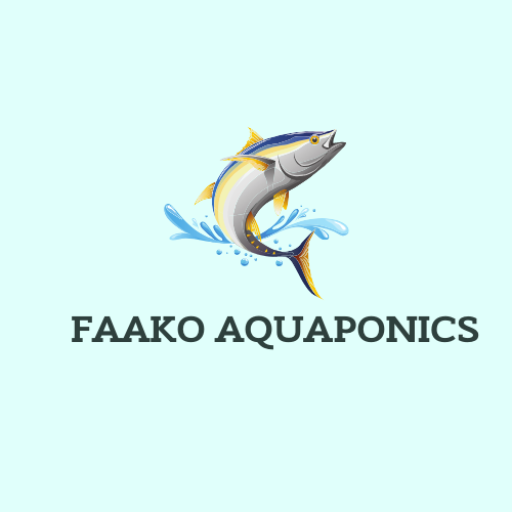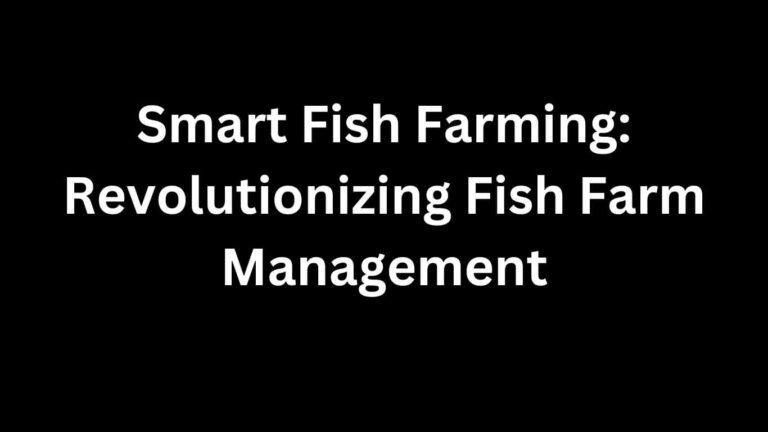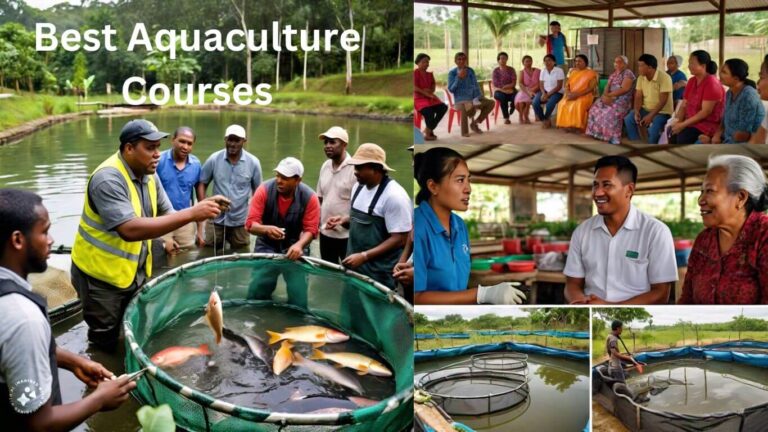Smart fish farming, particularly in fish farming or aquaculture, is gaining momentum as a solution to meet this demand while minimizing environmental impact.
In this blog post, we’ll explore how Internet of Things (IoT) technology is revolutionizing fish farm management, leading to increased efficiency, sustainability, and profitability.
1. The Rise of Smart Aquaculture In Water Quality Management
Maintaining optimal water quality is paramount in fish farming to ensure the health and growth of aquatic species. Traditional methods of water monitoring can be labor-intensive and often lack real-time insights.
However, with the advent of smart fish farming technologies, monitoring water quality has become more efficient and precise. Let’s look at the importance of monitoring water quality in smart fish farming and how IoT technology is revolutionizing this aspect of aquaculture management.
1. The Importance of Water Quality in Fish Farming
Optimal Conditions for Fish Health: Discuss the critical parameters such as temperature, pH level, dissolved oxygen, ammonia, and nitrite levels that directly impact fish health and growth.
Impact on Production: Explain how poor water quality can lead to stress, disease outbreaks, and reduced growth rates, ultimately affecting the productivity and profitability of the farm. It also leads to fish mortality.
Environmental Considerations: Highlight the significance of maintaining water quality to minimize environmental impact, such as eutrophication and contamination of surrounding ecosystems.

2. Traditional Water Monitoring Methods
Manual Testing: Describe how farmers traditionally collect water samples and perform manual tests in laboratories, which can be time-consuming and may not provide real-time data.
Visual Inspection: Mention the use of visual inspection for signs of water turbidity, algae blooms, and other visible indicators of water quality issues.
Challenges: Discuss the limitations of traditional methods, including their inability to provide continuous monitoring or immediate alerts for water quality fluctuations.
3. IoT-Based Water Quality Monitoring Systems
Introduction to IoT Sensors: Explain how IoT sensors are deployed in fish farms to continuously monitor key water quality parameters.
Parameter Monitoring: Detail the sensors used for measuring temperature, pH level, dissolved oxygen, ammonia, and nitrite levels, as well as turbidity and conductivity.
Real-Time Data Collection: Highlight the advantage of real-time data collection, allowing farmers to detect changes in water quality promptly.
Wireless Connectivity: Discuss how IoT sensors transmit data wirelessly to centralized monitoring systems, enabling remote access and control.
4. Benefits of IoT Water Quality Monitoring
Early Detection of Issues: Emphasize how continuous monitoring enables early detection of water quality issues, such as temperature spikes, pH fluctuations, or oxygen depletion.
Preventive Measures: Explain how real-time data alerts farmers to take preventive measures, such as adjusting aeration, modifying feeding schedules, or initiating water treatments.
Optimized Farm Management: Discuss how insights from water quality data help optimize overall farm management practices, leading to improved fish health, growth, and resource efficiency.
5. Future Trends and Innovations:
Integration with AI and Machine Learning: Discuss the potential of integrating IoT data with AI and machine learning algorithms to predict water quality trends and optimize farm management strategies.
Miniaturization and Cost Reduction: Mention ongoing developments in sensor miniaturization and cost reduction, making IoT-based monitoring systems more accessible to small-scale fish farmers.
Expansion of IoT Applications: Explore other potential applications of IoT technology in fish farming, such as automated feeding systems, fish tracking, and environmental monitoring.
2. Enhancing Feeding Practices in Smart Fish Farming
In the realm of smart fish farming, one of the key areas where technology is making significant strides is in feeding practices. Traditional methods of feeding fish often involve guesswork and manual labor, leading to inefficiencies and waste.
However, with the advent of IoT and automation, fish farmers can now optimize feeding processes to improve growth rates. It minimizes waste, and ultimately enhance profitability.
1. Automated Feeding Systems
Automated feeders are at the forefront of enhancing feeding practices in fish farming. These systems utilize sensors and algorithms to dispense feed accurately and efficiently based on predetermined schedules or real-time conditions.
These feeders are equipped with sensors to monitor parameters such as water temperature, fish behavior, and feeding patterns. Using this data, the feeders can adjust feeding schedules and portion sizes to ensure optimal nutrition for the fish.
2. Precision Feeding
With IoT technology, smart fish farmers can implement tailored feeding regimens that take into account the specific nutritional needs of different fish species and growth stages. This precision feeding helps optimize growth rates and minimize feed waste as part of smart fish farming.
IoT-enabled feeders allow for real-time monitoring of feeding activities. Farmers can track feed consumption patterns and adjust feeding schedules or portions as needed. To ensure smart fish farming, farmers must ensure that fish receive the right amount of feed at the right time.
3. Nutrient Optimization
Smart feeding systems can analyze the nutritional content of feed and adjust formulations to ensure that fish receive a balanced diet. This helps prevent nutrient deficiencies and promotes healthy growth.
- Monitoring Nutrient Levels in Water
In addition to optimizing feed composition, IoT sensors can also monitor nutrient levels in the water, such as ammonia and oxygen. By maintaining optimal water quality, fish health and feed conversion efficiency can be maximized.
4. Feed Efficiency and Cost Reduction
- Reducing Feed Waste
One of the main advantages of smart feeding systems is their ability to reduce feed waste. By accurately dispensing feed and minimizing overfeeding, farmers can lower operating costs and improve profitability.
- Improving Feed Conversion Ratios
Optimizing feeding practices can lead to improved feed conversion ratios, meaning that fish can convert feed into body mass more efficiently. This not only reduces the amount of feed required but also lowers the environmental impact of fish farming.
3. Precision Fish Tracking in Smart Fish Farming
In the realm of smart fish farming, precision fish tracking has emerged as a game-changer, revolutionizing the way fish are monitored and managed within aquaculture systems. This advanced technology allows for the precise monitoring of individual fish. This enable farmers to optimize feeding strategies, improve growth rates, and detect health issues early on.
1. Importance of Precision Fish Tracking
Precision fish tracking is a critical component of modern aquaculture, offering insights into individual fish behavior, growth patterns, and health status. Here, we discuss why this level of precision is essential for fish farm management:
Optimizing Feeding Strategies: By tracking individual fish, farmers can tailor feeding schedules based on the specific nutritional needs of each fish. This minimizes feed waste and maximizing growth.
Monitoring Growth Rates: Accurate tracking allows farmers to monitor the growth of individual fish over time, identifying outliers and adjusting stocking densities accordingly. This is part of smart fish farming management.
Early Detection of Health Issues: Changes in behavior or growth can indicate potential health problems. With precision tracking, farmers can intervene early, reducing the risk of disease outbreaks and minimizing losses.
2. Technologies for Precision Fish Tracking
Several technologies are employed for precision fish tracking, each offering unique advantages and applications:
RFID (Radio Frequency Identification): RFID tags are small electronic devices implanted in fish, allowing for individual identification and tracking. These tags emit radio signals that can be detected by readers installed throughout the farm.
Underwater Cameras: High-resolution cameras placed strategically in fish tanks or cages capture detailed images of individual fish. Computer vision algorithms analyze these images to track fish movements and behaviors. This is part of smart fish farming.
Acoustic Telemetry: Acoustic tags attached to fish emit unique sound signals that can be detected by receivers deployed in the water. This technology is particularly useful for tracking fish in open-water environments.
3. Applications of Precision Fish Tracking
Precision fish tracking finds applications across various aspects of smart fish farming management:
Feeding Optimization: Data collected from tracking systems inform automated feeding systems. This adjust feed amounts and frequencies based on individual fish behavior and nutritional requirements.
Stocking Density Management: By monitoring the growth of individual fish, farmers can optimize stocking densities to prevent overcrowding and ensure optimal conditions for growth.
Behavioral Analysis: Tracking data provides insights into fish behavior, such as swimming patterns, social interactions, and response to environmental stimuli. Aiding in the design of more efficient aquaculture systems in smart fish farming.
4. Benefits of Precision Fish Tracking
The adoption of precision fish tracking brings numerous benefits to fish farmers and the aquaculture industry as a whole:
Improved Efficiency: By precisely monitoring fish behavior and growth, farmers can optimize resources, reduce waste, and increase production efficiency. This increase smart fish farming operation.
Enhanced Disease Management: Early detection of abnormal behavior or growth allows for timely intervention, reducing the spread of disease and minimizing losses.
Data-Driven Decision Making: The wealth of data generated by tracking systems enables farmers to make informed decisions regarding stocking, feeding, and overall farm management.
5. Future Directions
As technology continues to advance, the capabilities of precision fish tracking are expected to expand:
Integration with AI and Machine Learning: Advanced algorithms will analyze tracking data to predict fish behavior. This optimizes feeding strategies, and detect health issues with greater accuracy.
Miniaturization of Tracking Devices: Smaller, more cost-effective tracking devices will make precision fish tracking accessible to a wider range of aquaculture operations, including small-scale farms and hatcheries.
4. Predictive Analytics for Disease Management in Smart Fish Farming
In the realm of smart fish farming, where technology continuously pushes the boundaries of traditional practices. Predictive analytics emerges as a game-changer for disease management. The ability to forecast disease outbreaks before they occur revolutionizes the way fish farmers safeguard their stocks. This ensures better health, improved productivity, and sustainable operations in smart fish farming.
Understanding Disease Management in Fish Farming
In aquaculture, diseases pose significant threats to fish populations, leading to economic losses and environmental concerns. Traditional disease management often involves reactive measures, such as treating sick fish after symptoms appear.
However, these methods can be costly, time-consuming, and may not always be effective in preventing widespread outbreaks.
The Role of Predictive Analytics
Predictive analytics leverages historical data, real-time sensor information, and advanced algorithms to forecast potential disease outbreaks with unprecedented accuracy.
By analyzing various factors such as water quality, environmental conditions, fish behavior, and health records. This predictive models can identify patterns and early warning signs of disease onset in smart fish farming.
Data Collection and Analysis
1. Sensor Technology: Internet of Things (IoT) sensors deployed throughout the smart fish farming continuously monitor crucial parameters like water temperature, pH levels, dissolved oxygen, and ammonia concentration. These sensors provide a wealth of data that forms the foundation for predictive analytics.
2. Health Records: Historical data on fish health, including disease incidents, mortality rates, and treatment outcomes, are integrated into the analysis. This information helps identify trends and risk factors associated with specific diseases.
3. Environmental Factors: External factors such as weather patterns, water flow, and pollution levels are also taken into account, as they can influence fish health and susceptibility to diseases.
Building Predictive Models
1. Machine Learning Algorithms: Advanced machine learning techniques, such as supervised learning, unsupervised learning, and reinforcement learnin. These, are employed to develop predictive models in smart fish farming. These models learn from historical data to make accurate predictions about future disease outbreaks.
2. Pattern Recognition: Predictive models identify patterns and correlations between various factors and disease occurrences. By recognizing these patterns, the models can anticipate when conditions are favorable for disease development.
Early Warning Systems
1. Threshold Alerts: Predictive models establish threshold values for key parameters, beyond which the risk of disease significantly increases. When these thresholds are approached or exceeded, the system generates alerts, notifying farmers of potential risks.
2. Proactive Measures: Armed with early warnings, fish farmers can take proactive measures to mitigate the risk of disease outbreaks. This may include adjusting water parameters, optimizing feeding regimes, or implementing targeted treatments.
Challenges and Future Directions
While predictive analytics offers tremendous potential for disease management in smart fish farming, several challenges remain. These include data integration issues, algorithm refinement, and the need for continuous monitoring and adaptation.
However, ongoing advancements in technology and data science hold promise for overcoming these challenges and further enhancing the effectiveness of predictive models.
The Power of Remote Management and Automation
1. The Evolution of Remote Management and Automation
Traditional Challenges: Discuss the limitations and challenges faced by traditional fish farming methods, such as manual labor, inconsistent monitoring, and reliance on physical presence.
Introduction to Remote Management and Automation: Introduce the concept of remote management and automation in aquaculture. Highlighting its role in overcoming traditional constraints and improving farm operations.
2. Remote Monitoring of Water Quality
Importance of Water Quality: Explain why maintaining optimal water quality is crucial for fish health and growth.
IoT Sensors and Monitoring Systems: Describe how IoT sensors and monitoring systems are used to remotely measure parameters such as temperature, pH, dissolved oxygen, and ammonia levels.
Real-time Data Analysis: Discuss the benefits of real-time data analysis in identifying trends, detecting anomalies, and ensuring timely interventions to maintain optimal water conditions.
3. Automated Feeding Systems
Traditional Feeding Practices: Outline the challenges associated with manual feeding, such as overfeeding, underfeeding, and labor intensity.
Automated Feeders: Explain how automated feeding systems work, including timed feedings, portion control, and adjustment based on fish behavior and environmental conditions.
Benefits of Automation: Highlight the advantages of automated feeding, such as improved feed conversion ratios, reduced feed wastage, and optimized fish growth. All these are part of smart fish farming activities.
4. Remote Control of Environmental Parameters
Water Exchange and Aeration: Discuss the importance of water exchange and aeration in maintaining water quality and oxygen levels.
Automated Systems: Describe how automated systems can remotely manage water exchange, aeration, and other environmental parameters based on preset parameters or real-time sensor data.
Energy Efficiency: Highlight the energy-saving benefits of automated environmental control systems and their contribution to sustainable farming practices.
5. Fish Tracking and Health Monitoring
RFID Tags and Underwater Cameras: Explain how RFID tags and underwater cameras are used for fish tracking and health monitoring.
Remote Access to Data: Discuss how farmers can remotely access data on fish behavior, growth rates, and health status, enabling early detection of issues and informed decision-making.
Integration with Health Management Systems: Explore how fish tracking and health monitoring data can be integrated with health management systems to facilitate disease prevention and treatment.
6. Enhancing Security and Safety
Surveillance Systems: Highlight the role of surveillance systems, including CCTV cameras and motion sensors, in enhancing farm security and preventing unauthorized access or theft.
Emergency Response: Discuss the importance of remote alarm systems for detecting emergencies such as water leaks, equipment failures, or predator intrusion, allowing for prompt response and mitigation.
7. Future Trends and Challenges
Advancements in Technology: Explore emerging technologies such as artificial intelligence (AI), machine learning, and robotics, and their potential applications in smart fish farming.
Addressing Connectivity Issues: Acknowledge challenges related to connectivity, power supply, and data management in remote farming locations and discuss strategies for overcoming these hurdles.
Regulatory Considerations: Touch upon regulatory frameworks and standards for remote management and automation in aquaculture. Emphasizing the need for compliance and best practices in smart fish farming management.
The Environmental Impact of Smart Fish Farming
Fish farming, or aquaculture, has become increasingly important in meeting the world’s growing demand for seafood. However, traditional methods of fish farming often come with environmental challenges such as habitat destruction, pollution, and overfishing.
Smart fish farming, powered by IoT technology, holds the promise of addressing these issues while ensuring sustainable seafood production.
Let’s check the environmental impact fish farming and how it’s shaping a more sustainable future for aquaculture.
Environmental Challenges of Traditional Fish Farming
Habitat Destruction
Traditional fish farms often require large amounts of space, leading to habitat destruction in coastal areas and estuaries. Additionally, the use of chemicals and antibiotics can harm surrounding ecosystems.
Pollution
Excessive feed, fish waste, and chemical runoff can lead to water pollution, causing algal blooms, oxygen depletion, and harm to aquatic life.
Overfishing and Pressure on Wild Stocks
The demand for fishmeal to feed farmed fish puts pressure on wild fish populations, leading to overfishing and disruption of marine ecosystems.
2. Smart Solutions for Environmental Sustainability
Optimized Feeding Practices
Smart fish farming employs IoT technology to precisely monitor feeding habits and adjust feed amounts accordingly, reducing waste and minimizing nutrient runoff.
Water Quality Management
IoT sensors continuously monitor water quality parameters such as temperature, pH level, and oxygen levels, allowing farmers to maintain optimal conditions and prevent pollution.
Disease Prevention and Control:
Early detection of diseases through IoT-enabled monitoring systems helps prevent the need for antibiotics and reduces the risk of disease outbreaks, thereby minimizing environmental impact.
Reducing Resource Consumption
Energy Efficiency
Smart fish farms incorporate energy-efficient systems for water circulation, aeration, and temperature control, reducing energy consumption and greenhouse gas emissions.
Water Conservation
Recirculating aquaculture systems (RAS) minimize water usage by continuously filtering and reusing water. This reduces the strain on freshwater resources and minimizing effluent discharge.
Sustainable Feed Ingredients
Efforts are underway to develop alternative, sustainable sources of fish feed, such as insect meal and plant-based proteins, reducing the reliance on wild fish stocks.
4. Protecting Biodiversity and Ecosystems
Coastal Zone Management
Smart fish farming practices consider the ecological impacts on coastal zones, implementing measures to minimize habitat destruction and protect sensitive ecosystems.
Integrated Multi-Trophic Aquaculture (IMTA)
IMTA systems cultivate multiple species together, with nutrient-rich waste from one species serving as feed for another, promoting biodiversity and reducing waste.
Marine Spatial Planning
Regulatory frameworks and zoning strategies help ensure responsible siting of fish farms, reducing conflicts with other marine activities and preserving biodiversity.
Conclusion
As the global population continues to grow, the need for sustainable food production becomes increasingly urgent. Smart fish farming technologies, particularly IoT-driven solutions, are playing a vital role in revolutionizing fish farm management. By optimizing water quality, feeding practices, fish tracking, disease management, and overall operations, smart aquaculture not only increases efficiency and profitability but also contributes to a more sustainable future for food production.





